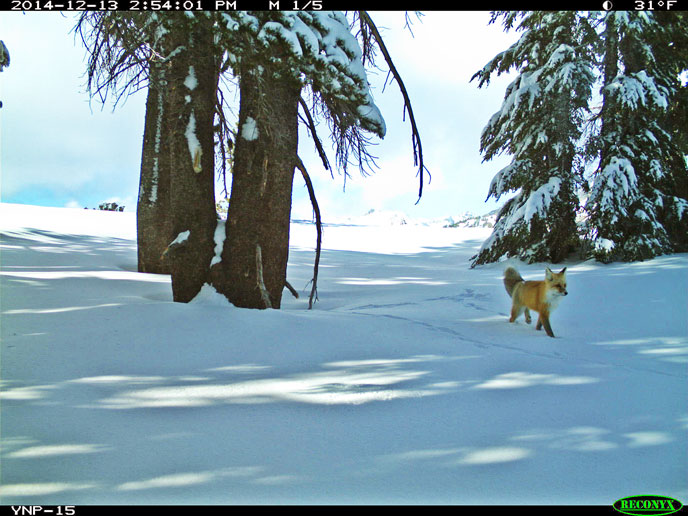January 29 – February 4, Current Events Lesson Plan
Current Event: Rare Red Fox Sighted in Yosemite
A rare Sierra Nevada red fox was recently sighted in Yosemite National Park. It is the first confirmed sighting of one of the rarest mammals in North America in Yosemite in nearly 100 years. The Sierra Nevada red fox is a subspecies of red fox. The subspecies was always relatively rare in its range, which once spanned Oregon and California, but experts now believe there are fewer than 50 such foxes living in the wild. The reason the fox has become so rare is unknown. Park biologists set up motion-sensitive cameras in areas in Yosemite. When they checked the images captured, a Sierra Nevada red fox had been photographed on two occasions. Biologists also placed hair-snare stations near the cameras. They will be able to genetically analyze the captured hair to determine how many individuals have been photographed and what their relationships are.

A Sierra Nevada red fox captured by a remote motion-sensitive camera in Yosemite National Park. Credit: NPS Photo
Objective:
A fox is a doglike animal with a bushy tail and a sharp snout. Foxes belong to the same family of animals as coyotes, dogs, jackals, and wolves. Most foxes are about the same size. Red foxes grow from 23 to 27 inches (58 to 69 centimeters) long. The tail measures an additional 14 to 16 inches (36 to 41 centimeters). Most of these animals weigh from 8 to 11 pounds (3.6 to 5 kilograms). Foxes and foxlike animals live throughout the world, except in Antarctica and Southeast Asia and on some islands. Red foxes are the most common foxes of Canada and the northern United States. Foxes are quick, skillful hunters. The red fox can easily catch a dodging rabbit. This fox can also creep silently toward a bird, then rush up and pounce on it. A fox has keen hearing and an excellent sense of smell. It depends especially on these two senses in locating prey. A red fox can hear a mouse squeak over 100 feet (30 meters) away. Foxes live in family groups while the young are growing up. At other times, they live alone or in pairs. They do not form packs as wolves do. The Behind the Headlines news story and related World Book articles explore foxes and other animals.
Words to know:
Discussion Topics:
1. Experts believe that fewer than 50 Sierra Nevada red foxes live in the wild. Ask your students to name some endangered species. (Students might name American crocodiles, Asiatic lions, blue whales, California condors, cheetahs, giant pandas, orangutans, tigers.)
2. Yosemite National Park was created in 1890. Ask your students to name some people who were living when Yosemite was created. (Students might say Susan B. Anthony, Clara Barton, Alexander Graham Bell, George Washington Carver, Marie Curie, Thomas Edison, Sigmund Freud, Mohandas Gandhi, V. I. Lenin, Claude Monet, Florence Nightingale, Theodore Roosevelt, Mark Twain, Booker T. Washington, Woodrow Wilson, Orville and Wilbur Wright.)
3. Have your students debate, “Scientists should try to clone animals that are endangered.”


